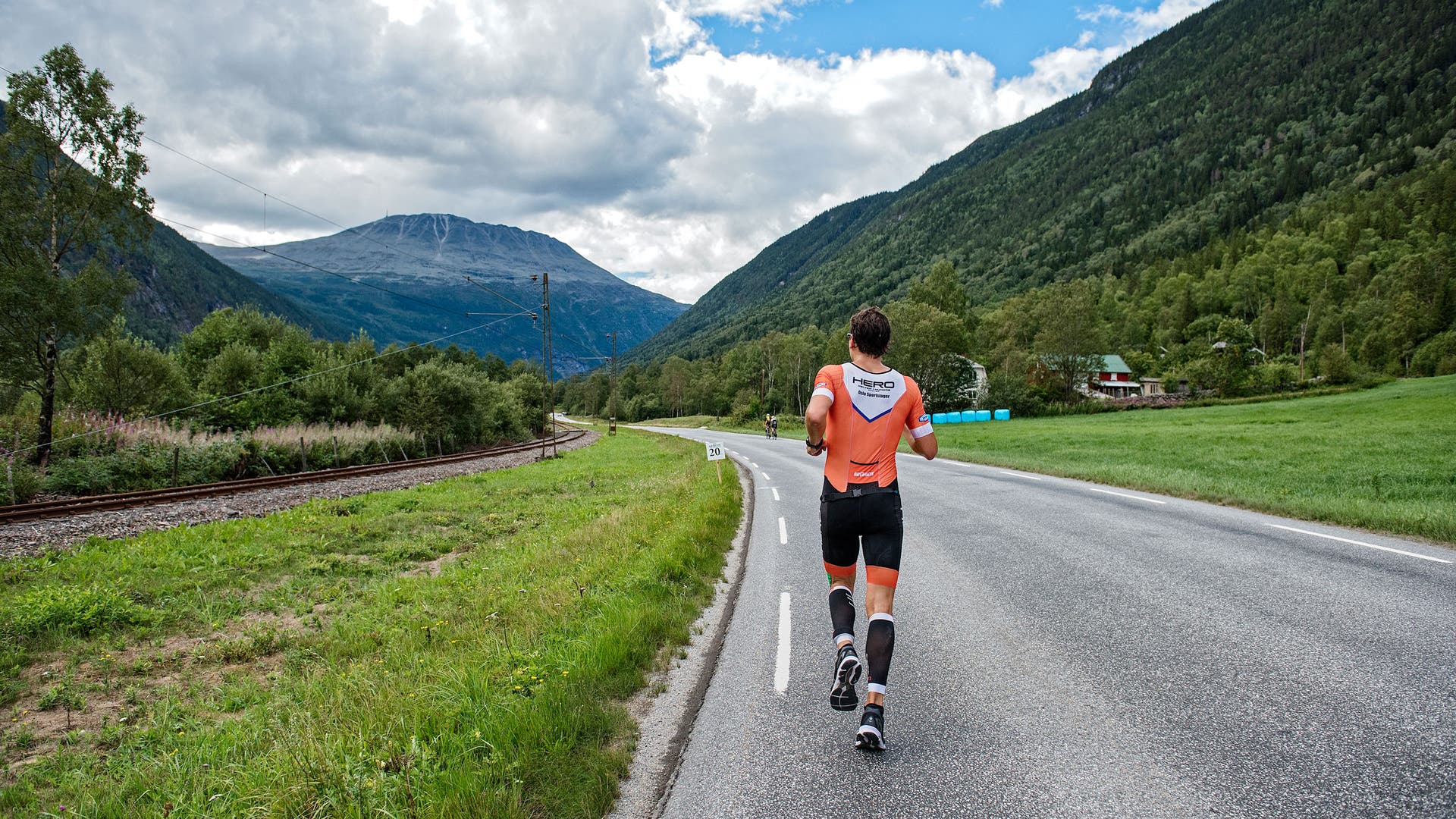Are We Hurting Ourselves When We Race?

An athlete runs the marathon at Ironman Kalmar in Sweden. Photo: Getty Images
Anyone who has participated in a long-distance triathlon knows that despite the amount of preparation that goes in to being ready for the event, the toll that it takes on your body just plain hurts. At the end of 70.3 or 140.6 miles, the stiffness and soreness in your muscles is an undeniable reminder of what you have just gone through and may make you wonder why it is that you put yourself through that kind of suffering.
Unfortunately, as many in the medical field are all too aware, that damage can be to more than just temporary muscle soreness. The stresses of long-distance swim, bike, and run events can impact critical organ function of the kidneys, gut, and in the most serious of cases the heart—resulting in serious illness or even death.
To better understand how long-distance triathlon affects our bodies, researchers have evaluated the levels of markers of tissue injury in the blood among athletes before they race, immediately after the finish, and then in the days following the event.

Studies Show Women Have Less Increase in Markers of Inflammation After Ironman
In 2017, a study from Sweden looked at competitors in the Ironman event in Kalmar, Sweden. Thirty athletes, evenly split between men and women, had blood samples analyzed before, immediately after, and then one week after the event for various markers of muscle, kidney, liver, and heart injury. In addition, markers of general inflammation were measured.
In this small study, the authors found that all markers were significantly elevated after the event when compared to before and that all had returned to near baseline by a week later. One factor that was identified to have a protective effect was being of the female sex, and that was independent of muscle mass or body fat percentage. That is to say that the increase in biomarkers was lower in women than in men, though both sexes did have significant elevations. The authors were unable to explain this finding.
Studies Show More Damage The Longer on Course
A more recent study, last month, came out of Norway where researchers compared athletes competing in an Olympic-distance triathlon in 2018 to those participating in the Norseman Extreme Triathlon across three years. Analyses in these athletes covered some of the same markers as in the Kalmar study, but in this case included many more assays that are not necessarily associated with cell injury, such as electrolytes and certain hormone levels.
Similar to what was found in the Swedish study, triathletes again had significant increases in all of the important biomarkers of inflammation and cell injury and, when comparing the two groups, it was not surprising to see that those who participated in the Norseman had far higher elevations than did those who participated in the Olympic-distance event. In addition, when re-measured one day later, Norseman participants had not demonstrated nearly as much recovery in those elevations as the participants in the standard distance.
When the authors further analyzed their data they found some really interesting correlations between some of the markers as well as between marker elevation and race preparedness and race duration. Some of these will not be surprising, while some may be.
For example, I would imagine that it will not come as much of a surprise to anyone that the longer a competitor was on the course, the more evidence there was of muscle damage. There was also a positive correlation between markers of general inflammation and markers of muscle injury, which merely reinforces the concept that when muscle cells are injured there is an inflammatory response.
What was really interesting was the finding that the amount of training by an individual leading up to a race correlated with only one other thing in the study: race time. Such that the more training one put in, the shorter their race time, but there were no other associations with training volume and any of the markers measured. Similarly, the age of the participant did have a correlation with one marker of inflammation, but not with anything else, including no marker of heart involvement.
Increase Markers Used to Diagnose Heart Failure—But What Does It Mean For Athletes?
One of the findings that the authors were alarmed by and dedicated much of their discussion to was the finding that a specific marker of cardiac stretch was very elevated, particularly in Norseman competitors. B-natriuretic peptide (BNP) is a marker of cardiac distention and is principally used to diagnose heart failure. In this study, BNP levels immediately after race completion were frequently well above the cutoffs for a heart failure diagnosis, though they did recover quickly.
It is very unclear what to make of all of this. In all of the studies done on this subject, the authors have focused on disease-oriented outcomes—i.e. lab markers—and not patient-oriented outcomes such as actual illness or death. In fact, in none of these studies have any of the subjects required hospitalization or treatment, nor have any died. So this raises the very legitimate question of what does any of this mean.
Many who have looked at these data have suggested theories to explain why it is that markers become elevated like this in the absence of any real disease: cell membrane leakage, cellular stress without true injury, and cardiac stretch related to increased venous return because of continuous muscle contraction have all been postulated and all been supported to varying degrees.
But others have pointed out that these theories are only one side of the argument and that even in healthy individuals elevation of these markers is almost always associated with poorer long-term outcomes no matter what the cause. For this reason, we need to take this kind of research seriously and ask ourselves whether or not the sensation of suffering over the course of a long-distance triathlon really is being translated in to something potentially worse down the road. For now, there is no evidence to suggest that this is the case, but the current evidence suggests that it may be a possibility.
This is one more reason to be sure to see your physician if you ever experience palpitations, shortness of breath or chest pain. You want to be sure that you can continue to train hard and train healthy.
Related from Dr. Jeffrey Sankoff: Can Training and Racing Make Me Susceptible to Illness?